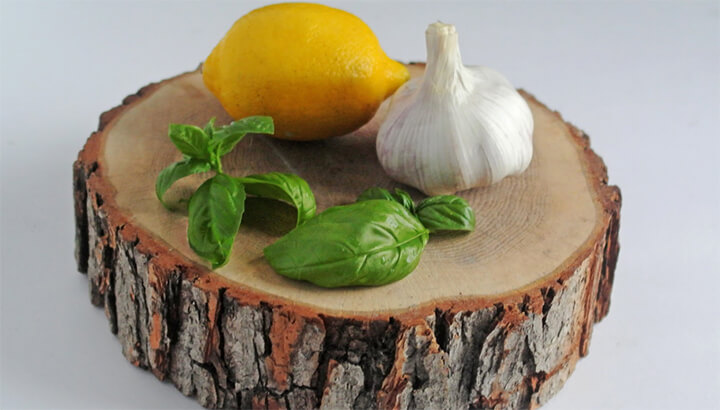
The foundation of a good salad is its dressing. I honestly can’t remember the last time I bought a packaged dressing and there are a couple of reasons for that. One, making your own dressings is more cost-effective; two, you know what’s in them; three, they’re an easy way to sneak in all kinds of health-boosting raw ingredients.
Salads don’t need to be boring. There are so many ways you can switch things up — and with this basil-infused lemon vinaigrette, you will not be disappointed. It’s bright, delicious and best of all, extremely healthy. Store it in the fridge and you’ll always have fresh vinaigrette for those lazy I-don’t-feel-like-cooking types of nights.
Exclusive: 7 Fabulous Healthy DIY Salad Dressings
When you have a vibrant vinaigrette ready to go, the possibilities are endless. I don’t know why, but salads seem to be completely underrated. Simply toss plenty of fresh vegetables, chickpeas, quinoa or whatever you fancy in this vinaigrette — adding that extra oomph every salad deserves.
Why make your own dressing?
I’m sure you’ve come across a number of online lists over the years — you know, something like, ‘The Ten Worst Foods You Eat Every Day.” More often than not, it’s the same culprits that end up making these top lists — margarine, non-fat foods, deli meats and so on.
Believe it or not, one of these common harmful foods is packaged salad dressings. Of course, you can source some great pre-made dressings that are all-natural, but I’m talking about your standard dressings that are found on non-refrigerated shelves. It can be tough to make healthy choices, and just like diet soda, “light” salad dressings are often the worst.
Sure, they lack fat and calories, but a ridiculous amount of salt and sugar are added to them. Eating foods with such high amounts of sugar will often lead to weight gain. If you think that’s bad, it gets worse; when you think you’re making a healthy choice choosing low-fat dressing options, you’re actually hindering your body’s ability to absorb carotenoid antioxidants found in greens and tomatoes.
In comparison, when using an olive oil base, you’re actually able to amp up nutrient absorption. This was reported within a Purdue University study, as certain healthy fats — such as those found in olive oil — allow you to maximize the benefits of the vegetables you consume. So interesting!
What types of ingredients should I use?
When it comes to a vinaigrette, there are no rules and that’s half the fun of it. From oils to herbs, spices to citrus fruits, there are so many possibilities. For this dressing, we used plenty of fresh basil straight from our garden, olive oil, garlic, lemon, sea salt and pepper.

If you have any space on your deck, you can easily grow your own fresh supply of basil. Belonging to the mint family, this herb is packed with beneficial properties. Within just half a cup, you obtain approximately 98 percent of your daily recommended intake of vitamin K — a nutrient that far too many Americans do not consume enough of.
Offering a unique array of flavonoids, basil has been shown to inhibit unwanted bacterial growth, protect DNA, promote positive cardiovascular health, offer anti-inflammatory effects and so much more. When you add unheated olive oil, lemon, garlic and seasoning to the mix, you create a dressing that’s not only vibrant but packed with nutrients.
|
Basil-Infused Lemon Vinaigrette
|
| Prep Time: |
| 5minutes |
| Cook Time: |
| nocooking |
| Total time: |
- Generous handful of fresh basil
- 1 lemon, juiced
- 1cup organic olive oil
- 4cloves of garlic
- salt to taste
- Pepper to taste
- Blender
- Toss all of the ingredients into a blender and voila! You have yourself a tasty dressing that can also be used on roasted vegetables, fish or whatever else you’d like to amp up both in terms of flavor and nutrition.
- Store in the fridge and use within two to three weeks
— Krista Hillis

